It was refreshing to visit the Tirlán Innovation and Research Centre in Ballyraggett last week. Yes, 2023 isn’t going to be simple for tillage farmers, but any tillage farmer would be encouraged walking around the building which opened in 2021.
Head of grains at Tirlán John Kealy described Irish oats as “the best in the world” and said the pandemic had prevented visitors from coming to the centre, but Tirlán was eager to show people the work going on. Last week, the grain award winners took the tour.
The product of the day was oats. It’s a growing market and one that appears to have an endless number of uses as a food ingredient.
From flakes to flour, we tasted a host of gluten-free and dairy alternatives from chocolate to biscuits and oat bars, to froth on coffee and dairy-free alternatives to ice cream and cream cheese.
Very importantly, oats have a lower carbon footprint than soya or almonds which are common dairy alternatives.
Irish oats are also high-yielding in comparison to many other countries.
Not in competition with dairy
One thing which was made very clear throughout the day is that the dairy alternative products are not going to be in competition with dairy.
Tom Finlay, head of strategic alliances, said oats sit very well beside the dairy offering at the company and they sell well together.
They are being sold together with dairy by sales representatives who travel to 160 countries and, in some cases, they are being sold in the same bottle, as is the case with the Avonmore Pro Oats drink.
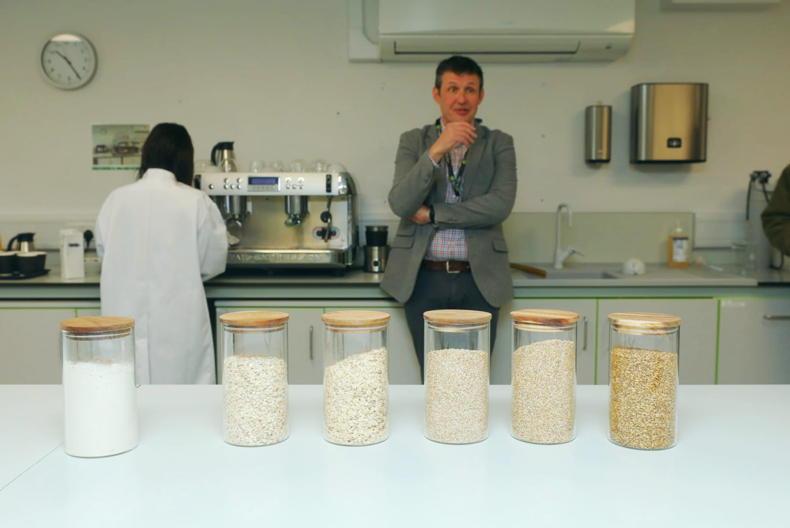
Tom Finlay with some of the oat products produced by Tirlán from flakes to flour.
Oat flour is proving very popular in Asia and at a recent trade show in France, the plant-based chocolate saw huge interest from potential customers.
Main products
Breakfast and porridge is still a big market for Irish oats.
Tirlán first supplied Odlums with oats for McCanns Irish Oatmeal shipped to the US in the 1960s and then became the sole supplier of that brand.
However, as time moves on, trends change and breakfast bars and plant-based dairy alternatives are becoming more popular.
The closed loop system at Tirlán sees checks from seed to end product. So, oats are planted into clean fields which have come out of crops like grass, oilseed rape or beans and are inspected throughout the year for cereal volunteers and wild oats, which could contaminate the crop with gluten.
The storage facilities in Kildare are for oats only and the state-of-the art mill in Portlaoise allows numerous different products to be produced. The mill allows for rigorous screening, taking out oats which aren’t consistent in colour, for example.
On average, it takes 1.5t to 2t of oats to produce 1t of oat flakes. However, it should be noted that the hulls from the oats are used in the animal feed mill across from the oat mill, so there is no waste.

Some of the grain award winners and Tirlán agronomists on a tour of the Innovation and Research Centre at Ballyragget.
Interestingly, Diarmuid Doran, who runs the mill, said a moisture content of 13% to 14% is ideal coming into the mill.
The oats are dried coming off the farm, but in other countries oats might be harvested at moisture contents which are too dry for processing.
Irish weather
The Irish weather certainly seems to be a plus for oats, not just for yield, but for consistency of yields and supply.
A few weeks ago, the Irish Farmers Journal revealed that Tirlán wanted to double its gluten-free oats area to approximately 5,000ac. This area is fairly secure at this stage for the coming spring.
Sales of oat products doubled in 2022 and this has provided confidence in the market. Bigger contracts have now been secured with North American countries where weather was interfering with supply.
In order to have consistent supply, these companies have signed contracts with Tirlán.
This also allows for more planning on farms as farmers can plan their rotations to include gluten-free oats.
Plant-based is a growing market and oats is a versatile product which can be used to produce dry products such as oat bars and biscuits or drinks.
A key product that Tirlán is now focused on is producing functional flours from oats. These flours, when added to water, can produce an oat-based drink, but getting the mix right is essential. Some flours can be insoluble or create a layer at the bottom of a bottle in a drink or a smoothie.
Analysing products is essential. Particle size is measured and all products are tested for their end uses. The innovation centre has small-scale machines to allow the real process to be mimicked as if it was large-scale.
The process goes as far as heat-treating products and testing for shelf life.
Most plant-based products would have a shelf life of about 12 months.
This part of the research centre allows the lab work to be put into practice and package products in foil bags and bottles in a sterile environment.
A bottling plant allows things like sedimentation in the bottle and shelf life to be examined, all of which are essential in getting a consumer-friendly product to market.
John Kealy stated that the company looked at a lot of different grains over the years and while oats is the focus of research at present the platform is there now to test other grains. Quinoa is one grain that Tirlán has trialled in the field, for example.

John Kealy, head of grains at Tirlán.
Director of research and development Michelle Collins said: “We are equipped to work on ingredients apart from oats” and machines like the SPX machine which is for heat treatment allows a check on commercial comparability.
There is also a plug-and-play area in the centre which allows some equipment to be brought in temporarily to be trialled for certain products.
Michelle explained that the centre allows for solution selling where Tirlán works with customers to develop their products and ensure that they are creating the ingredients needed for that product.
Product development
On average, it takes about 12 months to develop a product.
A culinary chef is employed at the centre to create things like sauces and deserts.
What products did we see?
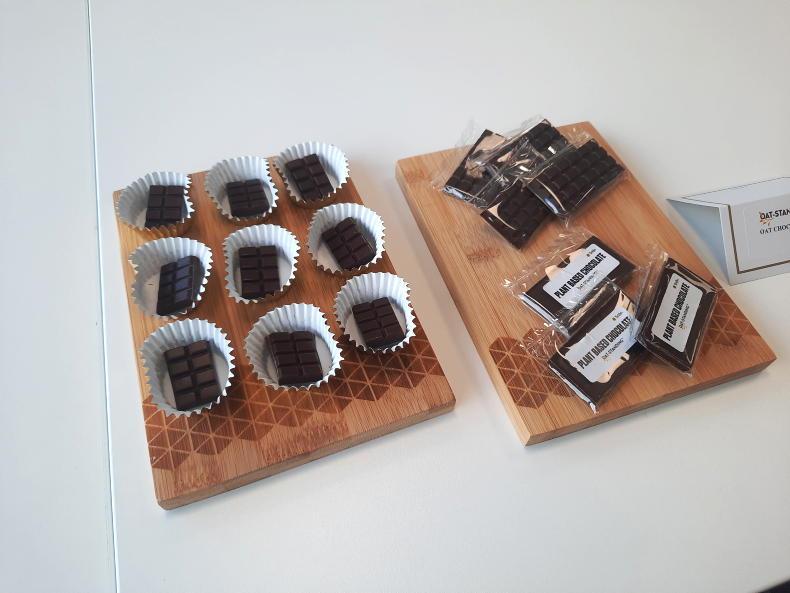
Oat-based chocolate.

Oat-based chocolate made with Irish oats.
Plant-based chocolate: tastes similar to a milk chocolate. The oat flour allows a like-for-like substitution with milk.An oat-based alternative to cream cheese: 8.4% oat flour. Spread well, looks like cream cheese, big in the Asian market.
Gluten-free oat cookies.
Gluten-free cookies: made mainly from jumbo oats, contains butter. No difference in taste with a non-gluten-free oat cookie.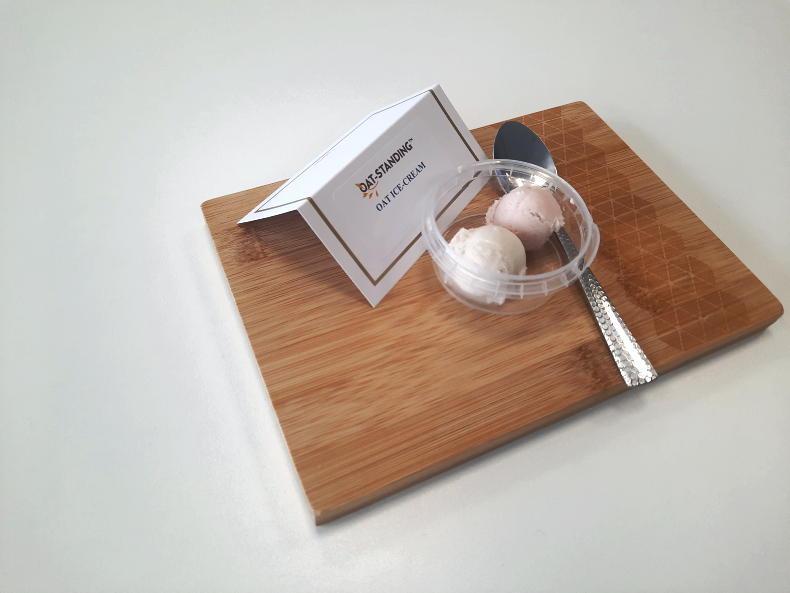
An oat-based alternative to ice cream.
Oat-based alternative to ice cream: oat flour is the main ingredient here. Neutral flavour to allow for flavourings and a creamy texture.High-fibre oat bar: oat flour is a key ingredient in this product as it helps to bind ingredients together.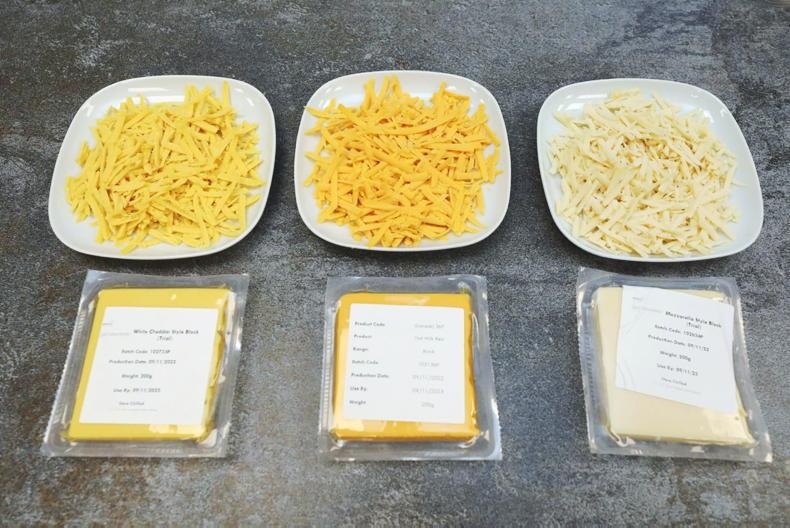
Oat-based alternatives to cheese.
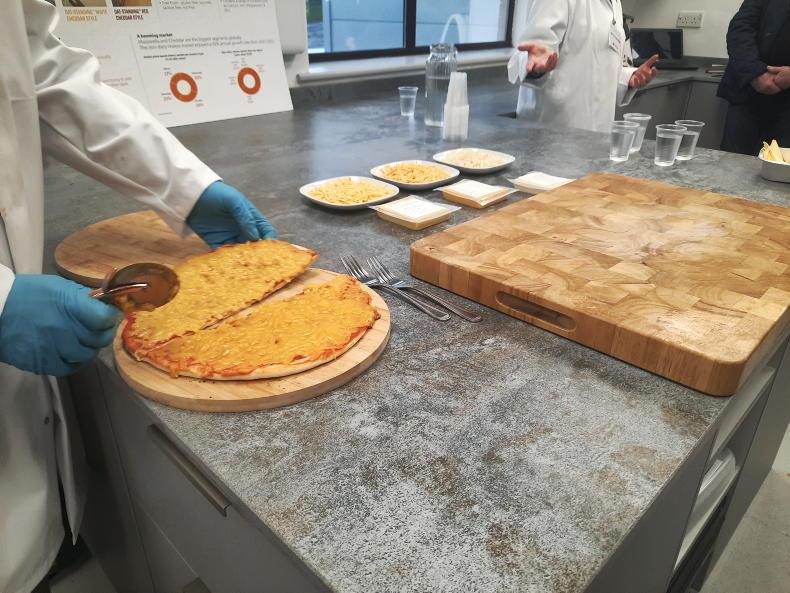
Pizza made with an oat-based alternative to cheese.

An oat-based alternative to cream cheese.
Oat-based alternative to cheddar and mozzarella cheese: oat flour again is the key ingredient here. Not greasy like some of these products can be.
It was refreshing to visit the Tirlán Innovation and Research Centre in Ballyraggett last week. Yes, 2023 isn’t going to be simple for tillage farmers, but any tillage farmer would be encouraged walking around the building which opened in 2021.
Head of grains at Tirlán John Kealy described Irish oats as “the best in the world” and said the pandemic had prevented visitors from coming to the centre, but Tirlán was eager to show people the work going on. Last week, the grain award winners took the tour.
The product of the day was oats. It’s a growing market and one that appears to have an endless number of uses as a food ingredient.
From flakes to flour, we tasted a host of gluten-free and dairy alternatives from chocolate to biscuits and oat bars, to froth on coffee and dairy-free alternatives to ice cream and cream cheese.
Very importantly, oats have a lower carbon footprint than soya or almonds which are common dairy alternatives.
Irish oats are also high-yielding in comparison to many other countries.
Not in competition with dairy
One thing which was made very clear throughout the day is that the dairy alternative products are not going to be in competition with dairy.
Tom Finlay, head of strategic alliances, said oats sit very well beside the dairy offering at the company and they sell well together.
They are being sold together with dairy by sales representatives who travel to 160 countries and, in some cases, they are being sold in the same bottle, as is the case with the Avonmore Pro Oats drink.

Tom Finlay with some of the oat products produced by Tirlán from flakes to flour.
Oat flour is proving very popular in Asia and at a recent trade show in France, the plant-based chocolate saw huge interest from potential customers.
Main products
Breakfast and porridge is still a big market for Irish oats.
Tirlán first supplied Odlums with oats for McCanns Irish Oatmeal shipped to the US in the 1960s and then became the sole supplier of that brand.
However, as time moves on, trends change and breakfast bars and plant-based dairy alternatives are becoming more popular.
The closed loop system at Tirlán sees checks from seed to end product. So, oats are planted into clean fields which have come out of crops like grass, oilseed rape or beans and are inspected throughout the year for cereal volunteers and wild oats, which could contaminate the crop with gluten.
The storage facilities in Kildare are for oats only and the state-of-the art mill in Portlaoise allows numerous different products to be produced. The mill allows for rigorous screening, taking out oats which aren’t consistent in colour, for example.
On average, it takes 1.5t to 2t of oats to produce 1t of oat flakes. However, it should be noted that the hulls from the oats are used in the animal feed mill across from the oat mill, so there is no waste.

Some of the grain award winners and Tirlán agronomists on a tour of the Innovation and Research Centre at Ballyragget.
Interestingly, Diarmuid Doran, who runs the mill, said a moisture content of 13% to 14% is ideal coming into the mill.
The oats are dried coming off the farm, but in other countries oats might be harvested at moisture contents which are too dry for processing.
Irish weather
The Irish weather certainly seems to be a plus for oats, not just for yield, but for consistency of yields and supply.
A few weeks ago, the Irish Farmers Journal revealed that Tirlán wanted to double its gluten-free oats area to approximately 5,000ac. This area is fairly secure at this stage for the coming spring.
Sales of oat products doubled in 2022 and this has provided confidence in the market. Bigger contracts have now been secured with North American countries where weather was interfering with supply.
In order to have consistent supply, these companies have signed contracts with Tirlán.
This also allows for more planning on farms as farmers can plan their rotations to include gluten-free oats.
Plant-based is a growing market and oats is a versatile product which can be used to produce dry products such as oat bars and biscuits or drinks.
A key product that Tirlán is now focused on is producing functional flours from oats. These flours, when added to water, can produce an oat-based drink, but getting the mix right is essential. Some flours can be insoluble or create a layer at the bottom of a bottle in a drink or a smoothie.
Analysing products is essential. Particle size is measured and all products are tested for their end uses. The innovation centre has small-scale machines to allow the real process to be mimicked as if it was large-scale.
The process goes as far as heat-treating products and testing for shelf life.
Most plant-based products would have a shelf life of about 12 months.
This part of the research centre allows the lab work to be put into practice and package products in foil bags and bottles in a sterile environment.
A bottling plant allows things like sedimentation in the bottle and shelf life to be examined, all of which are essential in getting a consumer-friendly product to market.
John Kealy stated that the company looked at a lot of different grains over the years and while oats is the focus of research at present the platform is there now to test other grains. Quinoa is one grain that Tirlán has trialled in the field, for example.

John Kealy, head of grains at Tirlán.
Director of research and development Michelle Collins said: “We are equipped to work on ingredients apart from oats” and machines like the SPX machine which is for heat treatment allows a check on commercial comparability.
There is also a plug-and-play area in the centre which allows some equipment to be brought in temporarily to be trialled for certain products.
Michelle explained that the centre allows for solution selling where Tirlán works with customers to develop their products and ensure that they are creating the ingredients needed for that product.
Product development
On average, it takes about 12 months to develop a product.
A culinary chef is employed at the centre to create things like sauces and deserts.
What products did we see?

Oat-based chocolate.

Oat-based chocolate made with Irish oats.
Plant-based chocolate: tastes similar to a milk chocolate. The oat flour allows a like-for-like substitution with milk.An oat-based alternative to cream cheese: 8.4% oat flour. Spread well, looks like cream cheese, big in the Asian market.
Gluten-free oat cookies.
Gluten-free cookies: made mainly from jumbo oats, contains butter. No difference in taste with a non-gluten-free oat cookie.
An oat-based alternative to ice cream.
Oat-based alternative to ice cream: oat flour is the main ingredient here. Neutral flavour to allow for flavourings and a creamy texture.High-fibre oat bar: oat flour is a key ingredient in this product as it helps to bind ingredients together.
Oat-based alternatives to cheese.

Pizza made with an oat-based alternative to cheese.

An oat-based alternative to cream cheese.
Oat-based alternative to cheddar and mozzarella cheese: oat flour again is the key ingredient here. Not greasy like some of these products can be. 













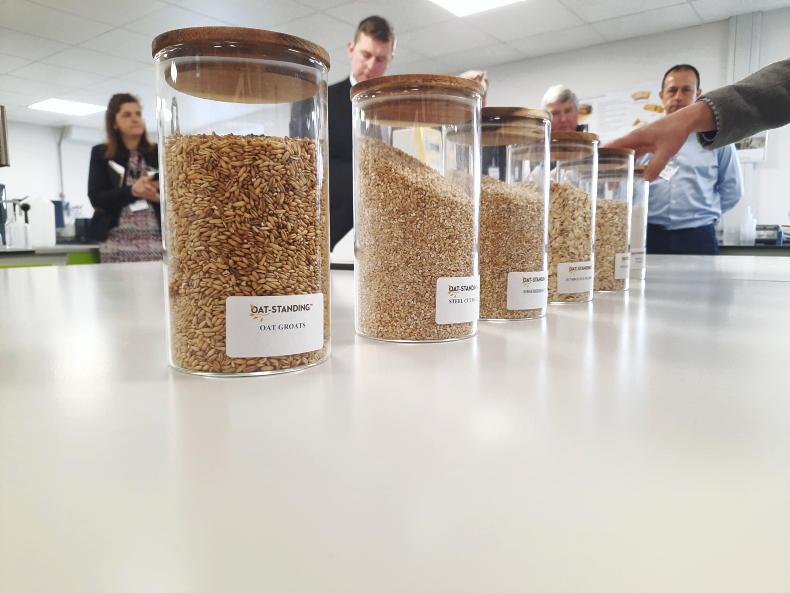
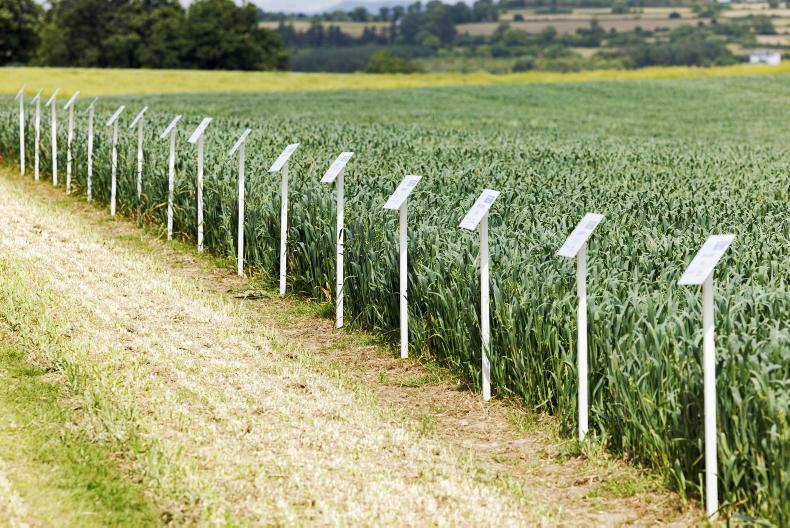
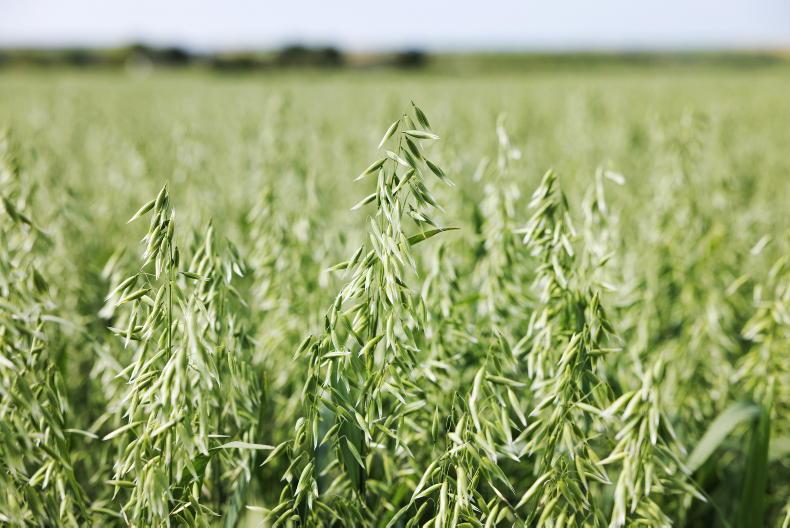


SHARING OPTIONS